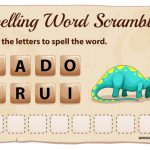Effective Treatments for Nasal Congestion in Infants
Infants who have nasal congestion may experience discomfort and have trouble breathing, therefore it’s crucial for parents to discover efficient treatments for their child’s stuffy nose. It is essential to know the origins, symptoms, and suitable treatments for nasal congestion in order to comfort and relieve patients. In this post, we’ll look at several easy, risk-free ways to assist babies with nasal congestion breathe easier and feel better overall, as well as understanding and overcoming toddler bad breath. By employing these techniques, you may provide your infant the comfort they require while also ensuring a calm and pleasant experience for the two of you.
What is nasal Congestion?
Nasal congestion refers to the swelling and inflammation of the nasal passages, leading to a stuffy or blocked nose. This condition can be particularly challenging for infants, as they are unable to clear their nasal passages on their own. Nasal congestion in infants is commonly caused by factors such as colds, allergies, and environmental irritants.
When infants experience nasal congestion, it can significantly impact their comfort and breathing. The swollen nasal passages make it difficult for them to breathe through their nose, often resulting in noisy breathing, snoring, and disrupted sleep patterns. Infants may also exhibit signs of irritability, decreased appetite, and frequent sneezing. The presence of clear or thick discharge from the nose and constant nasal rubbing or flaring are further indications of nasal congestion.
Recognizing these symptoms and understanding the causes of nasal congestion are essential for parents to provide timely and effective relief for their little ones. By addressing nasal congestion promptly, parents can help alleviate discomfort, improve breathing, and ensure their infant’s overall well-being.
Understanding the Signs of Nasal Congestion
For an early intervention, it is essential to recognize the signs of newborn nasal congestion. Watch out for these indicators:
- Breathing through the nose is difficult.
- A snore or loud breathing
- Frequent sniffling
- Clear or thick discharge from a runny nose
- A reduction in appetite and irritability
- Disturbed sleeping habits
- Rubs or flares the nose
Now that we have a better understanding of nasal congestion and its signs and symptoms, let’s look at some efficient treatments for your baby.
- Maintain the Air Moist
- Nasal drops of saline
- Elevate the head
- Bathroom with steam
- Maintain Hydration
- Use a bulb syringe
- Avoid Irritants
Nasal congestion might worsen in dry air. Use a cool-mist humidifier in your baby’s room to keep the air moist. This lessens congestion and keeps the nasal passages moisturised. To stop the growth of bacteria or mould, make sure to clean the humidifier frequently.
Infants can relieve nasal congestion safely and effectively using nasal saline drops. Give a few drops into each nostril, then gently suction any extra mucus out with a bulb syringe. This easy method might provide your child immediate relief and help them breathe more easily.
Elevating your infant’s head as they sleep can help relieve congestion in their nasal passages. To give the mattress a slight inclination, place a folded towel underneath it. Mucus can better escape from the body in this position, which also improves sleep quality by reducing congestion.
Nasal congestion can be reduced by creating a steamy environment in the bathroom. In order to create steam in the space, shut the door and turn on the hot shower. Allow the warm wetness to release the mucus and open the nasal passages while you sit with your infant in the bathroom for around 10 to 15 minutes.
Drinking enough water can thin the mucus and relieve nasal congestion. Offer breast milk, formula, or water to your kid if they are six months or older to make sure they get enough fluids. A healthier respiratory system and congestion are encouraged by increased water.
For clearing your baby’s nose of extra mucus, a bulb syringe is a useful tool. To produce suction, squeeze the bulb, gently push the tip into the nostril, and then let go of the bulb. Continue with the other nostril. To ensure hygiene, don’t forget to completely clean the syringe after each usage.
Reduce your exposure to things like pet dander, strong odours, and cigarette smoke that can irritate nasal congestion. To avoid further congestion and discomfort, keep your baby’s environment clean and free of harmful allergens.
Infants who experience nasal congestion may find it upsetting, but there are effective treatments that can help them feel better and breathe better. You can give your congested baby much-needed relief by putting the tips covered in this article into practice, such as maintaining a moist environment, using nasal saline drops, elevating the head, making a steamy bathroom, ensuring hydration, using a bulb syringe, and avoiding irritants. Always seek medical advice if your symptoms continue or get worse. Keep in mind that a happy baby is a comfortable and content baby. We encourage you to visit Eurokids for more information about children. Learn about a world where children receive compassionate care and excellent education.















